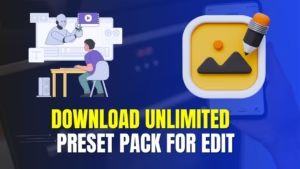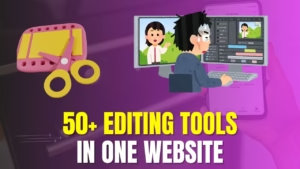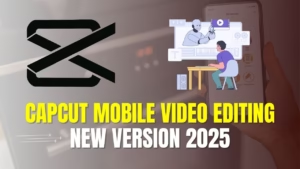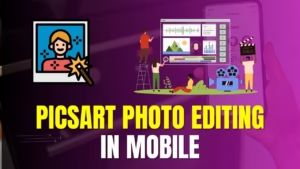- Introduction
- Why PNG matters in video editing
- What makes PNG special?
- H1: Understanding the PNG Format
- H2: What is a PNG file?
- H2: Why is PNG used in video editing?
- H3: Transparency
- H3: High-quality lossless compression
- H1: Benefits of Using PNG Files in Video Editing
- H2: Crisp and Clear Images
- H2: Seamless Overlay Possibilities
- H2: Layering Effects with Transparency
- H2: No Background Hassles
- H1: How to Use PNG in Popular Video Editing Software
- H2: Adobe Premiere Pro
- H3: Importing PNG Files
- H3: Applying PNG Overlays
- H2: Final Cut Pro
- H3: Drag and Drop PNGs
- H3: Adjusting Opacity and Layering
- H2: DaVinci Resolve
- H3: Node-Based PNG Effects
- H2: CapCut / Mobile Editing Apps
- H3: PNGs for social media content
- H2: Adobe Premiere Pro
- H1: Common Use Cases for PNG in Video Editing
- H2: Logos and Watermarks
- H2: Lower Thirds and Titles
- H2: Icons and Emojis
- H2: Custom Animations
- H1: Tips for Using PNG Effectively
- H2: Use High-Resolution PNGs
- H2: Organize PNG Assets Properly
- H2: Keep File Sizes in Check
- H1: Mistakes to Avoid with PNG Files
- H2: Not Checking for Transparency
- H2: Using PNGs Where JPG is Better
- H2: Overloading Timeline with Large PNGs
- H1: Converting Other Formats to PNG
- H2: Best Tools for Conversion
- H2: Maintaining Transparency When Exporting
- H1: Creating Your Own PNG Assets
- H2: Using Photoshop or Canva
- H2: Save with Transparent Background
- H1: Advanced PNG Tricks in Video Editing
- H2: Motion Graphics with PNG
- H2: Keyframing PNGs for Animation
- H1: Should You Use PNG or SVG?
- H2: Differences and Use Cases
- H2: Which One Works Better in Editing Software?
- H1: PNG in Green Screen & Compositing
- H2: PNGs vs Chroma Keying
- H2: Quick Compositing with PNG
- H1: Export Settings for Videos with PNG Layers
- H2: Best Codecs and Formats
- H2: Maintaining PNG Quality in Final Output
- H1: Resources for Free PNGs
- H2: Trusted Websites
- H2: License and Usage Tips
- Conclusion + FAQs
Introduction
Ever found yourself dragging an image into your video editing timeline and wondering why it doesn’t look right? That’s probably because it wasn’t a PNG. If you’ve ever used a PNG before, you probably already know—it’s the secret weapon for clean, professional, and stylish video edits.
So what’s the big deal about PNGs, and how exactly can you use them like a pro in your video projects? Let’s break it all down.
Understanding the PNG Format
What is a PNG File?
PNG stands for Portable Network Graphics. It’s a type of image file known for its lossless compression, meaning it keeps all the image detail without sacrificing quality. Unlike JPGs, PNGs support transparency—which is a game-changer in video editing.
Why is PNG Used in Video Editing?
Transparency
One word: transparency. PNG files can have clear backgrounds, which makes them perfect for overlays, logos, and graphics that float seamlessly on top of your footage.
High-Quality Lossless Compression
PNG images don’t get blurry or pixelated. They stay crisp no matter how many times you save or move them—unlike JPGs that degrade over time.
Benefits of Using PNG Files in Video Editing
Crisp and Clear Images
PNGs keep your visuals looking sharp. Whether it’s a logo or an icon, PNGs make your video look professional.
Seamless Overlay Possibilities
Add elements like text bubbles, callouts, or emojis over your footage without ugly boxes or backgrounds ruining the look.
Layering Effects with Transparency
You can stack PNGs over video clips or other images, creating dynamic, multi-layered visuals.
No Background Hassles
Say goodbye to hours of background removal—just use a PNG with transparent background, and you’re good to go.
How to Use PNG in Video Editing
How to Use PNG in Popular Video Editing Software
Adobe Premiere Pro
Importing PNG Files
Drag and drop PNGs into your media bin, then place them on a track above your video.
Applying PNG Overlays
Resize and position them anywhere in the frame. They’ll retain transparency automatically.
Final Cut Pro
Drag and Drop PNGs
Just like Premiere, FCP handles PNGs natively. Drop them in and position them over your footage.
Adjusting Opacity and Layering
Play with blend modes or lower opacity to get unique visual effects.
DaVinci Resolve
Node-Based PNG Effects
Use nodes to add PNG overlays and apply motion or blend effects. Super powerful for advanced users.
CapCut / Mobile Editing Apps
PNGs for Social Media Content
Mobile apps like CapCut also support PNGs. Use them for stickers, logos, or effects in short-form content.
Common Use Cases for PNG in Video Editing
Logos and Watermarks
Want your brand to stay on screen without being distracting? PNG logos are your go-to.
Lower Thirds and Titles
Use PNG templates or design your own in tools like Canva to create sleek lower thirds.
Icons and Emojis
Want to add fun to your video? Drop PNG emojis or icons to liven things up.
Custom Animations
Bring your PNGs to life with keyframes or animation presets.
Tips for Using PNG Effectively
Use High-Resolution PNGs
Blurry PNGs = amateur vibes. Always go for high-res.
Organize PNG Assets Properly
Keep your files in labeled folders. Trust us, future you will thank you.
Keep File Sizes in Check
Too many large PNGs can slow your editing software down. Compress when needed.
Mistakes to Avoid with PNG Files
Not Checking for Transparency
Some PNGs have white or black backgrounds—don’t assume transparency.
Using PNGs Where JPG is Better
For full-screen photos or backgrounds, JPGs work fine and save space.
Overloading Timeline with Large PNGs
Too many heavy files can lag your timeline. Keep it clean.
Converting Other Formats to PNG
Best Tools for Conversion
- Photoshop
- Canva
- Online converters like CloudConvert or Convertio
Maintaining Transparency When Exporting
Always use “Save As” or “Export As” and check “Transparency” box if available.
Creating Your Own PNG Assets
Using Photoshop or Canva
Design your graphic, then export as PNG with transparent background.
Save with Transparent Background
Avoid flattening layers if using Photoshop—keep the transparency intact!
Advanced PNG Tricks in Video Editing
Motion Graphics with PNG
Animate PNGs with motion presets, pan-and-zoom effects, or keyframes.
Keyframing PNGs for Animation
Move your PNG across the screen, change size or opacity—get creative!
Should You Use PNG or SVG?
Differences and Use Cases
SVG is vector-based and great for web. PNG is raster and works better in video.
Which One Works Better in Editing Software?
Most video editors don’t support SVG. PNG is the safer, smarter choice.
PNG in Green Screen & Compositing
PNGs vs Chroma Keying
Chroma keying removes green backgrounds, but PNGs already have transparency—faster and cleaner.
Quick Compositing with PNG
Drop in a transparent PNG instead of chroma keying—it’s drag, drop, done.
Export Settings for Videos with PNG Layers
Best Codecs and Formats
Use formats like MOV (ProRes) or MP4 (H.264) that retain visual clarity.
Maintaining PNG Quality in Final Output
Always export in high-quality settings to keep those overlays sharp.
Resources for Free PNGs
Trusted Websites
- PngTree
- Freepik
- Pngimg
- CleanPNG
License and Usage Tips
Double-check licensing for commercial use. Free doesn’t always mean free to use.
Conclusion
Using PNG in video editing isn’t just for pros—it’s for anyone who wants clean, modern, and professional-looking content. Whether you’re adding a logo, designing a cool transition, or creating animated overlays, PNG files make your workflow easier and your videos better.
So the next time you’re editing, skip the JPEGs and embrace the power of PNG!
FAQs
1. Can I use PNG files in all video editing software?
Yes! Most modern video editors like Premiere, Final Cut, and even mobile apps support PNG files.
2. How do I know if a PNG has a transparent background?
Check in an image viewer or editor—if you see a checkerboard pattern, it’s transparent.
3. Are PNGs better than GIFs for video overlays?
For static images, yes. GIFs are good for animation, but PNGs offer better quality and transparency.
4. Why is my PNG background not transparent in the video editor?
It might not actually be transparent—some PNGs come with a white background. Try another PNG or re-export with transparency.
5. Can I animate a PNG file in my video?
Absolutely! You can apply keyframes, transitions, and even motion effects to PNGs.










